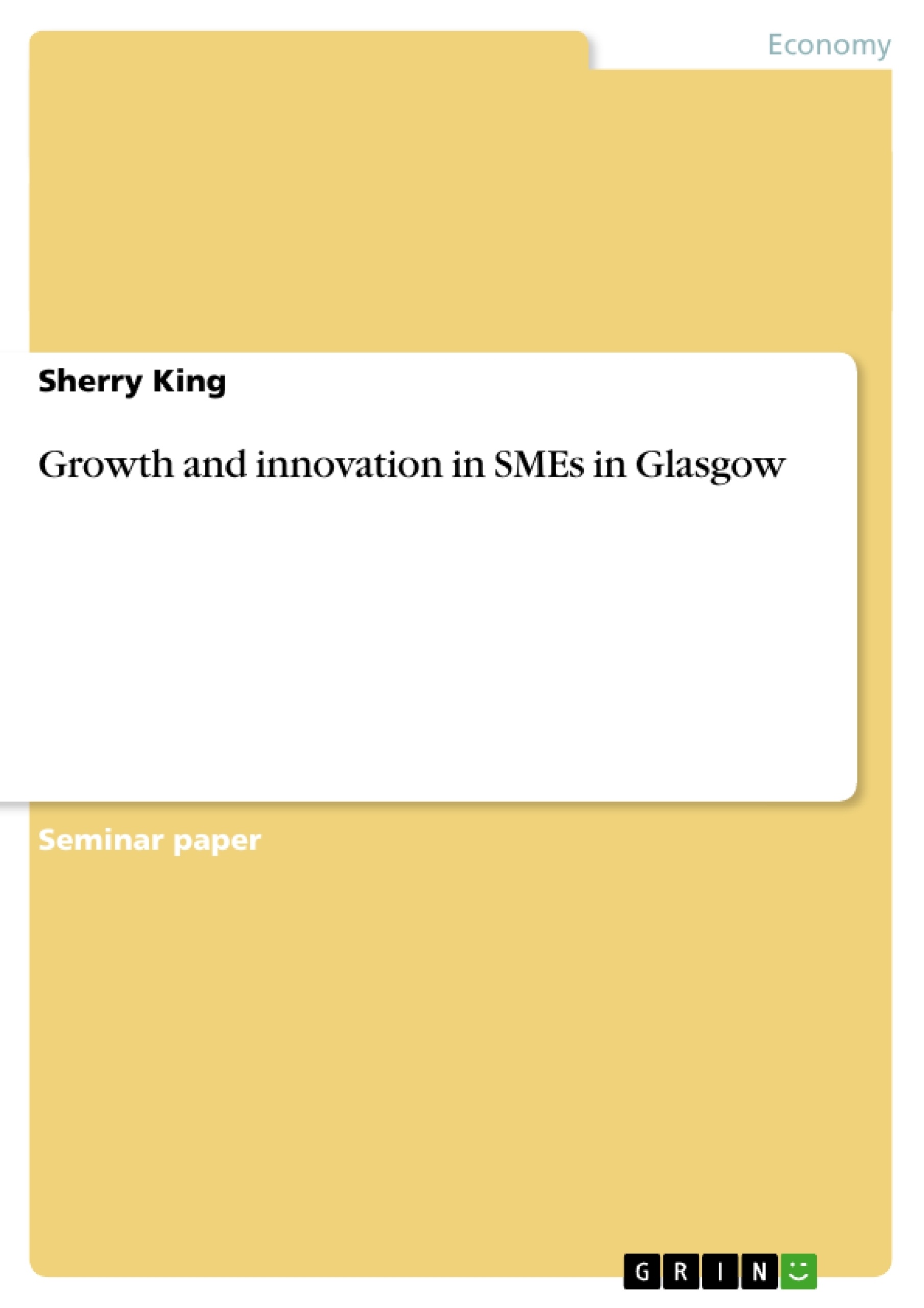Small and Medium sized Enterprises (SMEs) are becoming increasingly innovative in order to remain competitive. From an entrepreneurial perspective there has been an increasing reluctance from entrepreneurs and small firm owners on this changing role of growth and innovation. Current findings highlight that majority of SMEs in the United Kingdom do not actively employ other people (Small Business Service, 2004) and for those that do, only a small majority engage in innovation (Gray, 2006). Scottish policies have encouraged growth and innovation in SMEs. However, there is still reluctance amongst owners to an extent.
Introduction
Small and Medium sized Enterprises (SMEs) are becoming increasingly innovative in order to remain competitive. From an entrepreneurial perspective there has been an increasing reluctance from entrepreneurs and small firm owners on this changing role of growth and innovation. Current findings highlight that majority of SMEs in the United Kingdom do not actively employ other people (Small Business Service, 2004) and for those that do, only a small majority engage in innovation (Gray, 2006). Scottish policies have encouraged growth and innovation in SMEs. However, there is still reluctance amongst owners to an extent.
Research question
SMEs in Scotland already benefit greatly from increased funding and support systems which are not found in other parts of the EU. Nevertheless, many new SMEs and even those who are well established find that they are not able to realise their full potential. Increased competition from larger corporations combined with a global recession has resulted in many SMEs taking less risk to pursue growth and stability. Although there is an increasing amount of research on the entrepreneurship/innovation nexus, there are still many sector-specific and region-specific works that needs to be done which leads to the question that this research seeks to answer:
“To what extent is there a relationship between growth and innovation in Small and Medium Sized Enterprises in Glasgow?”
This question will be the aim and the main basis of the research study. To answer the research question, review of literature will be undertaken in order to find studies that have been conducted in this field and understand the developments and key findings from the authors.
Research objectives
Four key objectives of the study have been developed. These will be the main focus of the study and will be looked into using various research techniques. The objectives are:
1. To define what is meant by a Small and Medium Sized Enterprise and why the Scottish Government support them.
2 . To identify literature that either proves or disproves the theory that there is a relationship between growth and innovation in SMEs
3 . To test the theory for validity
4 . To create recommendations on how to apply growth and innovation in SMEs
Literature Review
Definition of SMEs
The European Union Commission (2003) officially redefined a SME in 2003 as:
“The category of micro, small and medium-sized enterprises (SMEs) is made up of enterprises which employ fewer than 250 persona and which have an annual turnover not exceeding 50 million euro, and/or an annual balance sheet total not exceeding 43 million euro.”
However, because SMEs will vary in their levels of size, employment and sales it is difficult for there to be one uniformly accepted definition (Storey, 1994). For example, the World Bank defines SMEs as having up to 300 employees with a maximum turnover of $15,000,000, whereas UNDP characterises SMEs as having a maximum of 200 employees (Gibson et al, 2008).
[...]
- Citar trabajo
- Sherry King (Autor), 2011, Growth and innovation in SMEs in Glasgow, Múnich, GRIN Verlag, https://www.grin.com/document/269803
-

-

-

-
¡Carge sus propios textos! Gane dinero y un iPhone X. -

-
¡Carge sus propios textos! Gane dinero y un iPhone X. -

-
¡Carge sus propios textos! Gane dinero y un iPhone X. -

-
¡Carge sus propios textos! Gane dinero y un iPhone X. -

-
¡Carge sus propios textos! Gane dinero y un iPhone X.

